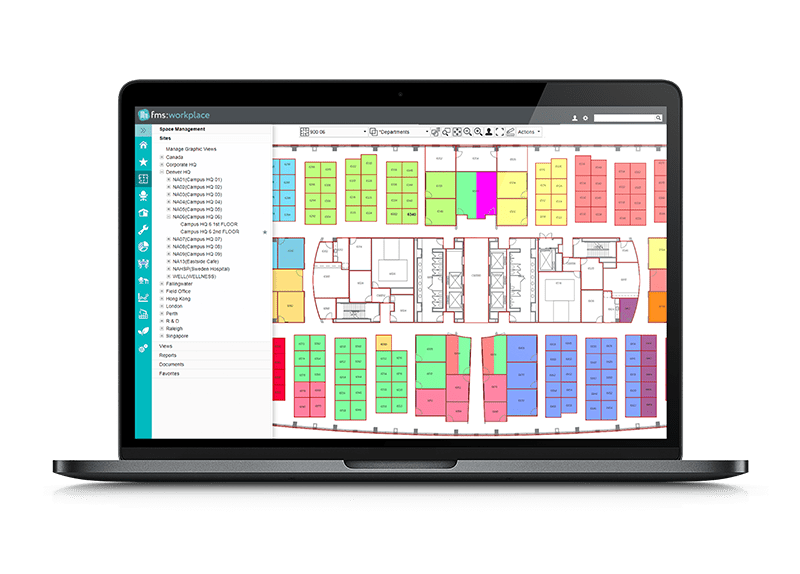University of Texas San Antonio
The Customer
The University of Texas at San Antonio (UTSA) is a multicultural discovery enterprise institution with more than 34,000 students. It is the largest university in the San Antonio metropolitan region with four campuses across the city.
The Challenge
The university campus includes a complex network of buildings and spaces with diverse functionality. Traditionally, space management was a reactive responsibility where facilities managers responded to requests from various departments and stakeholders. Space management was also decentralized, with each college and department making decisions in silos.
The lack of a central system made it time-consuming for the university to provide information to the Texas Higher Education Coordinating Board, the organization that determines need for state university funding largely based on utilization of space, classrooms, and laboratories. Maximizing utilization of existing facilities to prove need was essential for a fast-growing urban university in an area where new construction costs $600-650/sq. ft.
Understanding how each space was being used and determining how it should be used required UTSA to centralize and improve its data tracking and analysis of real estate. That’s why the university turned to FM:Systems.

– Josh Gerken, UTSA Assistant Vice President of Campus Planning
The Solution
Phase 1 of replacing their legacy system with FM:Systems focused on creating a centralized data governance program. This process included efficiently collecting data about every space under the university’s management and storing it in the FMS:Workplace platform. Facilities managers collaborated with representatives from each college and department to source up-to-date drawings, and they cross-referenced their information with government requirements such as functional codes and square-foot capacities for each space.

Once this was complete, UTSA moved into Phase 2 to understand the needs of each stakeholder and the nuances of each space to optimize the campus in the long run. As part of this process, they worked with FM:Systems to set up the Higher Ed Survey, which required assigning point people in each department to act as data custodians to help track and update the survey. This process reveals the status, needs and opportunities for each department to improve their access to space they need and to identify misallocations that can be better utilized to serve the university’s mission, students and employees.
In the midst of this campaign, the Covid-19 pandemic interrupted business as usual. The disruption highlighted a lot of reasons the university undertook these investments in the first place. It also crystalized the advantage of FMS:Workplace features such as hoteling and reservations for offices, desks and conference rooms. The ability to quickly and accurately run scenario tests to adapt to fluctuating health and safety circumstances and protocols all came down to having the right data on hand and visibility into the requirements of each department.
– Josh Gerken, UTSA Assistant Vice President of Campus Planning
The Results
The most noticeable benefit of integrating FM:Systems as a core part of UTSA’s campus management program is having a centralized system that the university can use to inform strategic decisions. The database provides data visibility as well as knowledge gaps.

The system has established the space management team as critical partners for the university’s leadership, colleges, and departments. Each unit can now see how their assets are being leveraged, removing many of the assumptions and guesswork around the opportunities that exist in their spaces. Additionally, FM:Systems is instrumental for maximizing not only space such as classrooms, laboratories and conference rooms but also resources such as tech deployments and infrastructure upgrades such as remodeling old spaces or improving security measures.
Beyond that, the ability to look at color-coded floor plans at a granular or zoomed out level helps them create collaborative cores, with benefits that haven’t been quantified to date but that bring a more strategic approach to space utilization. This knowledge creates a proactive environment that enables the university’s space management team to leverage space requests to inform and achieve larger goals. They can now plan three to four moves deep in anticipation of the university’s evolution of needs as it emerges from the pandemic and continues to grow.
– Josh Gerken, UTSA Assistant Vice President of Campus Planning

Make your annual space survey process faster, easier and more accurate
Download our guide on how your university space team can simplify reporting, improve ICR rates and gain insights for more informed, strategic decision-making.









